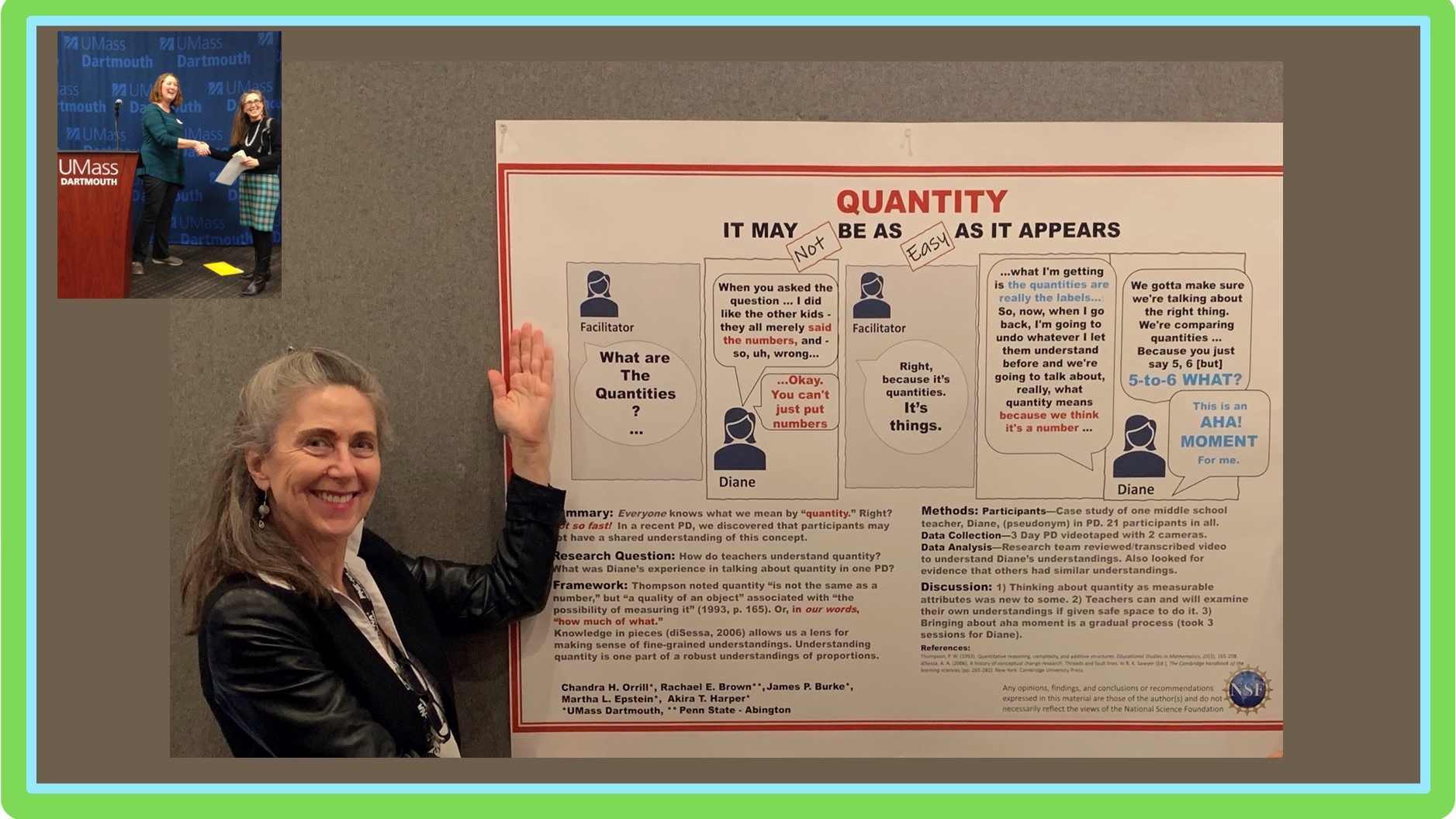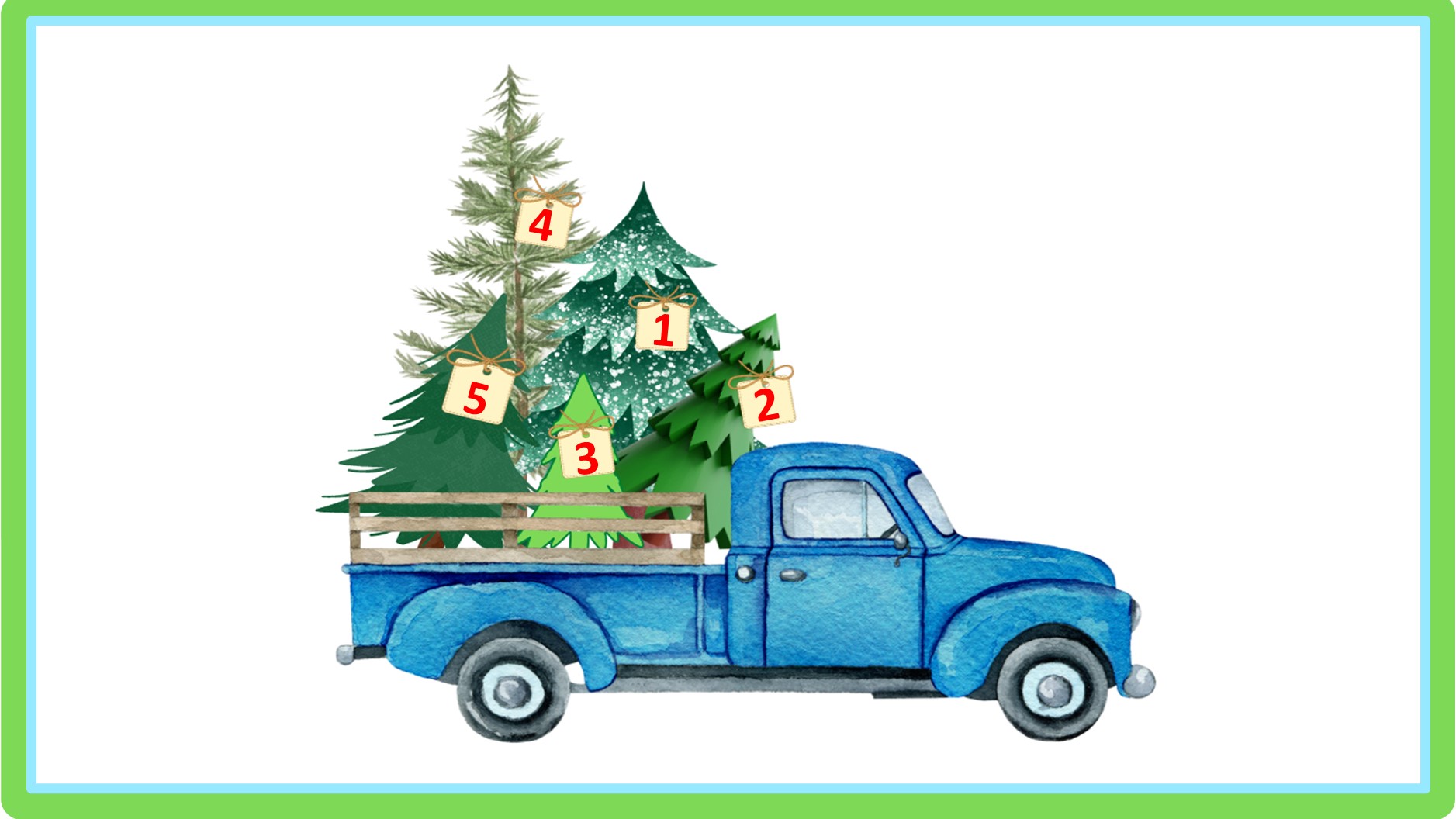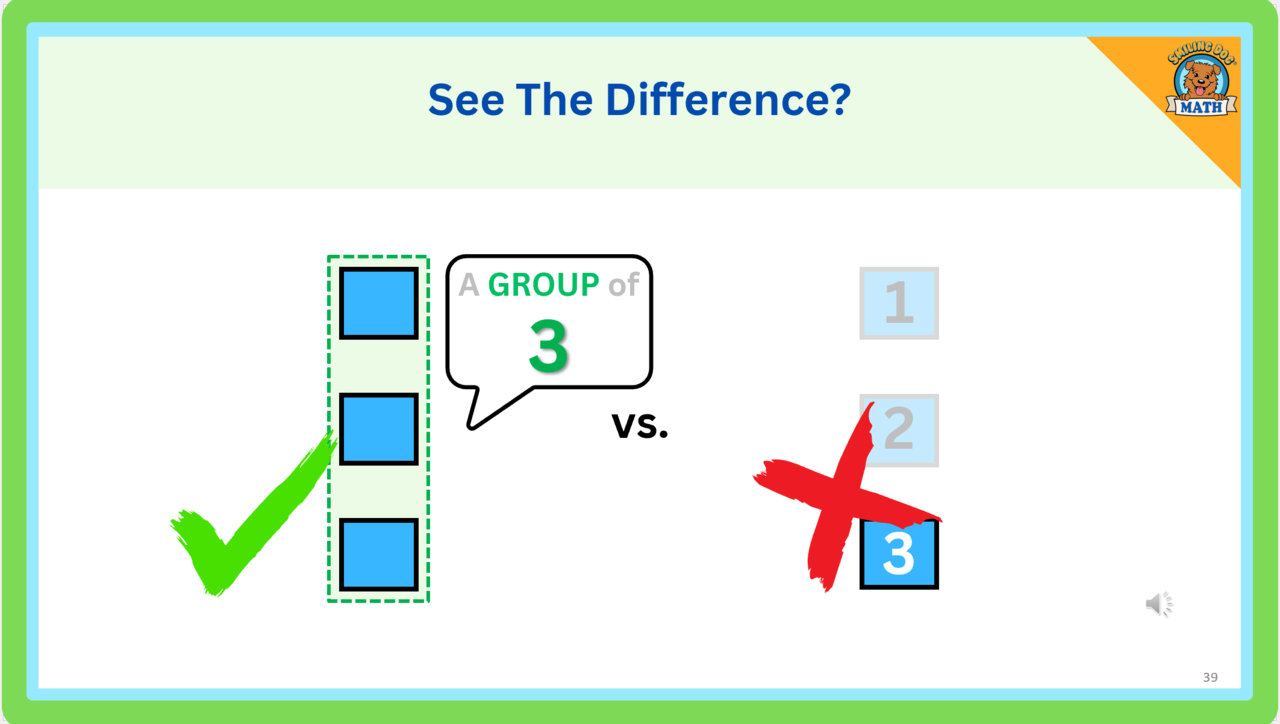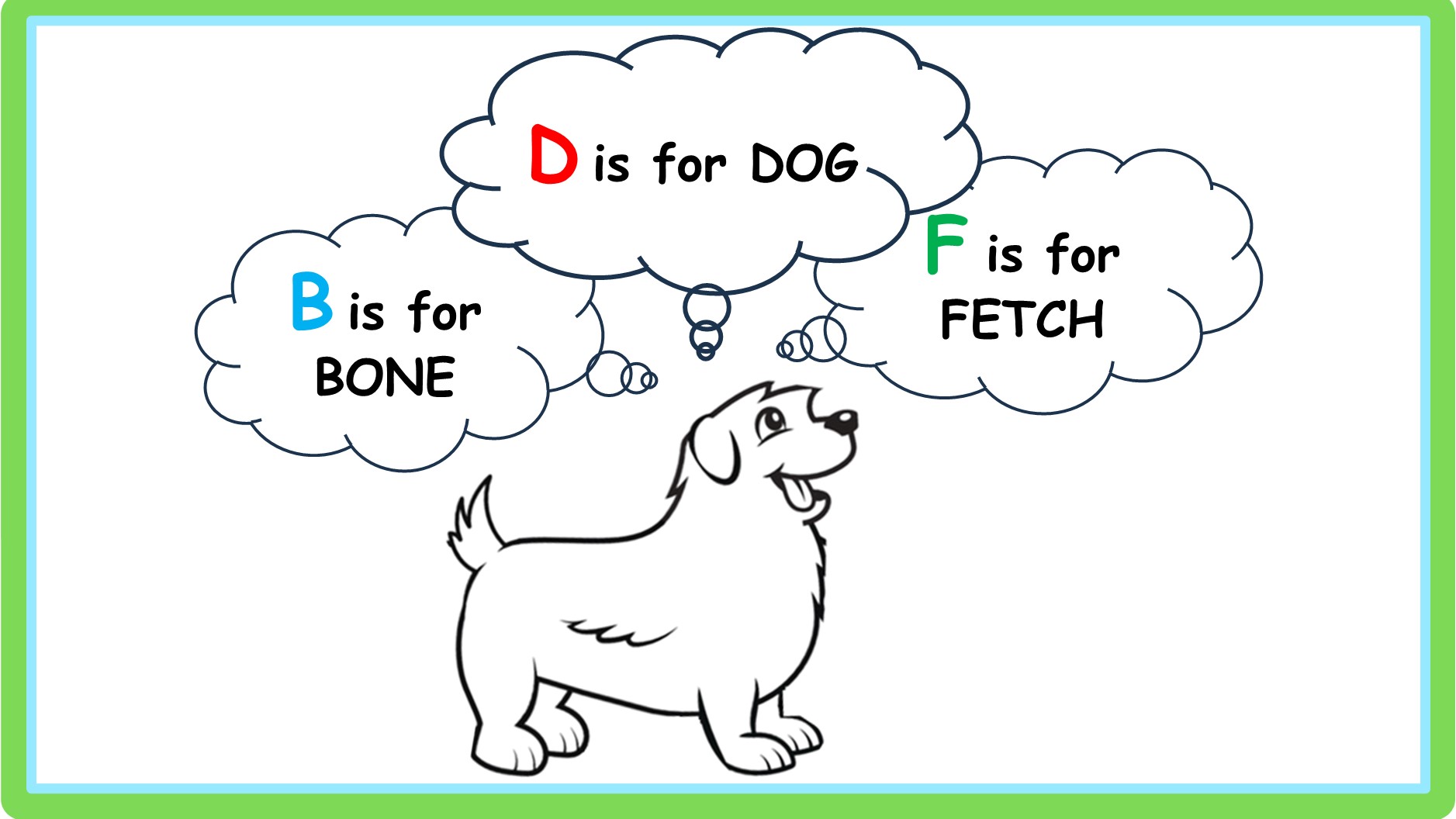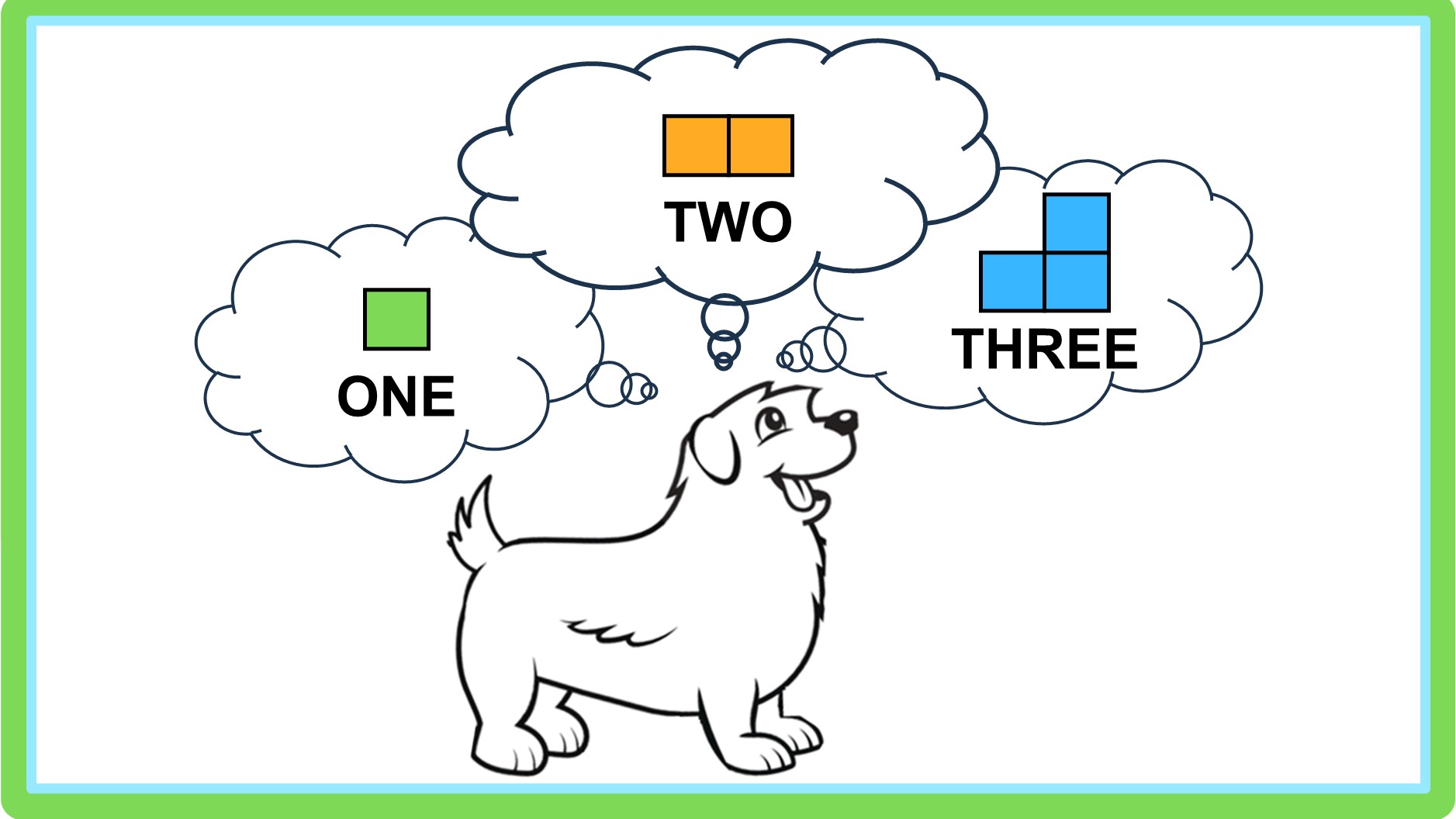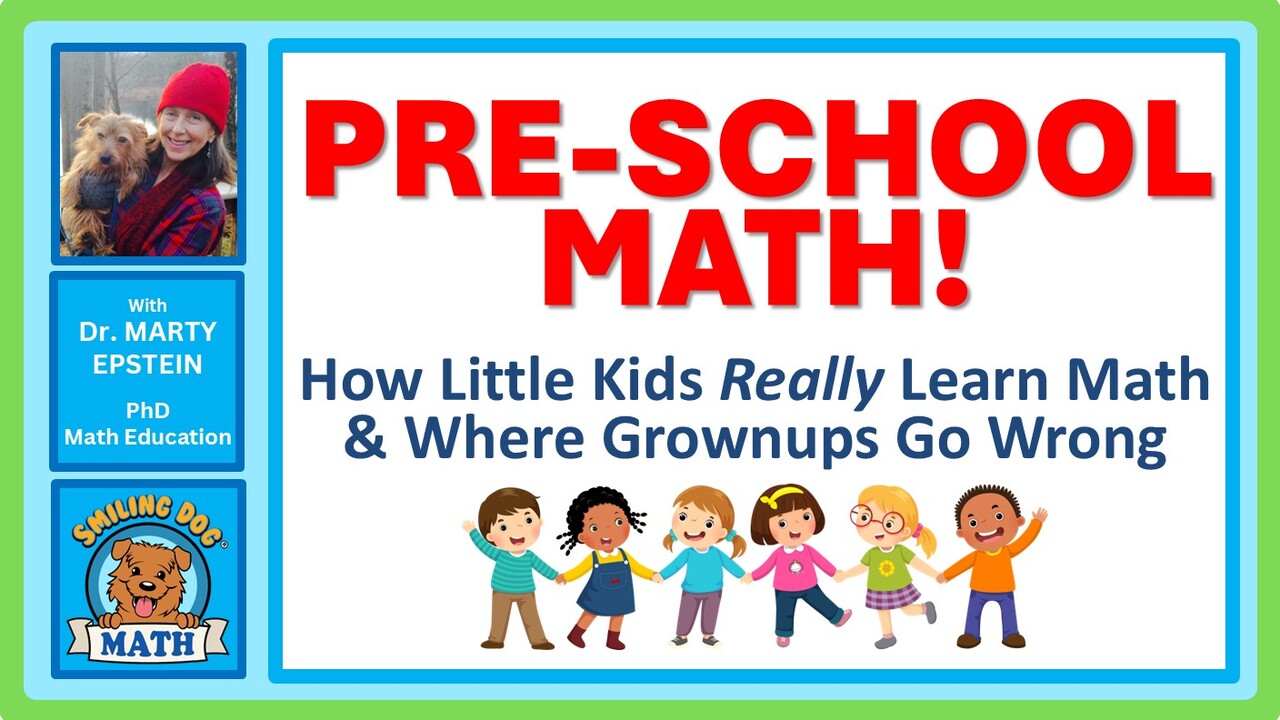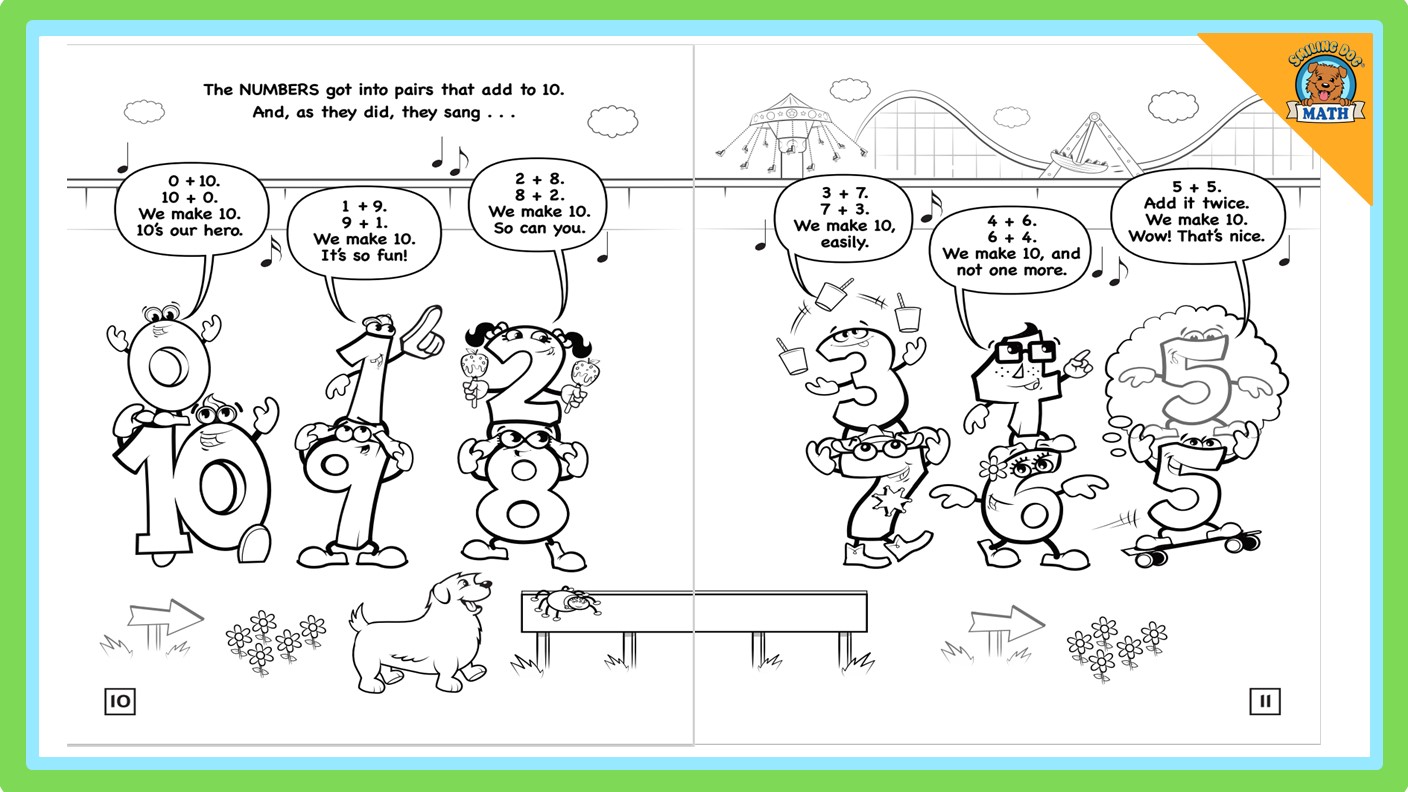Smiling Dog® Math . . .
We're different! Unlike so many math books and videos for early learners currently available, Smiling Dog® Math books and videos are informed by research about how children learn math.
Topics addressed by Smiling Dog® Math books and videos include:
- Teaching children about numbers! (e.g., what numbers tell us, counting, the Cardinal Principle, "subitizing" etc.)
- Learning addition facts through fun story/coloring/activity books
- Taming the Multiplication Monster by mastering multiplication facts using minimal memorization
Unfortunately, too many math picture books and videos aren't aligned with how children actually learn math! That's what the research shows!
That's why Dr. Epstein is developing her own early math materials under the Smiling Dog® Math umbrella. Her background uniquely qualifies her for this. She . . .
- Excelled at math, including advanced math, earning an award in calculus and the top grade in multiple graduate statistics classes.
- Has studied how children actually learn math and what can go wrong (MS in psychology, PhD in Math Education)
- Understands, therefore, how the math a kindergartener learns connects to their ability to understand increasingly advanced math.
- Has researched the strengths/weakness of math picture books (she is also a published picture book author)
- Is passionate about early math education. Her interest was sparked by concerns about how her own children were being taught math, and she wanted to do something to help other children learn and love math.
- Successfully tutored her own children in math (Psst . . . they went on to study and win awards in math and physics and are now working on PhD's in related fields.)
You might be thinking: "Does it really matter? Isn't anything that exposes a child to numbers and math helpful? Aren't numbers . . . numbers? Isn't math . . . math?
Early math materials matter! Too many early math materials (e.g., picture books, videos, etc.) are well-intentioned, but mathematically ill-conceived. In some, the math is confusing. In others, the way numbers and math is presented can actually harm a child's ability to understand math by planting and reinforcing ideas that make it difficult for a child to understand math.
To illustrate that, let's play "What's Wrong With This Picture (from an early math perspective)?" The picture created below shows how numbers are used in many picture books. Specifically, the numbers 1 - 5 are used below to "name/label" individual things (in this case trees).
What's the problem with that? The problem has to do with what information "numbers" communicate when we use them this way. In this picture, the numbers are "communicating" the name/label of individual trees. But . . . will a child be able to understand addition if this is their exclusive view of numbers? For example . . . does (a tree named 2) + (a tree named 3) = (a tree named 5)? NOPE! This makes no sense! (For an example of a popular math holiday picture book with this kind of math "hiccup," check out the Dec 18, 2024 blog. The blog also discusses an easy fix!)
To understand addition, subtraction, multiplication, and division, a child must understand that numbers are used to tell us "how many of something are in a GROUP."
The picture below shows how different these two views of numbers are. One is the basis of mathematics. One is not! Understanding that (and how) numbers tell us "how many of something are in a GROUP" has to be learned, and learning it is actually a complicated, multi-step process that involves a lot more than rote, simple counting. That means there's no guarantee a child will learn it. And if a child doesn't learn and understand this idea about numbers, they won't be able to understand math.
So, let's help children understand numbers in a way that allows them to understand math! Just as an early learner who doesn't understand what "phonetic information" a letter is communicating will likely struggle to read, an early learner who doesn't understand what "mathematical information" a number is communicating will struggle to understand math.
Early learners need to know what "information" letters and numbers communicate!
Things can go wrong right away! Right from the start, several factors conspire to give children a flawed understanding of the basic "information" a number is communicating when it is used mathematically. These factors include:
- Overemphasizing rote counting (This is not a typo . . . too much counting--if all we are doing is rote, simple counting--can cause real problems. Here's a YouTube video that explains this . . . Why Too Much Counting Can Be A Big Problem!)
- Not appreciating the critical role of "subitizing" (the ability to recognize the size of a group without counting) in early math development. (To quickly understand why "subitizing" is such an early math superpower, check out this short YouTube video . . . Subitizing: The Early Math Superpower!)
- Not understanding how to teach "subitizing" (Here are two videos . . . Teaching Subitizing: Part A; Teaching Subitizing! Part B).
- Not understanding how to teach counting so it is mathematically meaningful (not just a list of words in order). Here's a video about that . . . How To Teach Counting So Children Understand It!
Below are summaries of the Smiling Dog® Math books. For more information about each book, click on the "BOOKS" tab. For an up-to-date list of YouTube videos, check out the "VIDEOS" tab.
..............................................................................................................................................................
TAMING the MULTIPICATION MONSTER! Workbook (Here's the Amazon link! Paperback & e-book versions)
- This workbook offers a unique way to learn multiplication facts because it stresses understanding and learning a few patterns; not memorizing.
- This approach also builds number sense and lays the foundation for understanding division.
- One Amazon reviewer (cass) wrote that after months of watching her child try unsuccessfully to master multiplication facts, "...This book finally had him getting them down."
- Recommendation! If your child is doing their multiplication facts by skip counting, relying on addition, using their fingers (there's a way to multiply by 9 this way), or some other way in which, for example, a given multiplication fact is embedded in a much longer song or rhyme, I strongly recommend working to develop individual multiplication fact "automaticity." Why? Because to do the math that is right around the corner (e.g., division, fractions, proportions, algebra, etc.), having direct, quick mental access to individual multiplication facts is really, really, really important!
..............................................................................................................................................................
TEACHING MATH to Pre-SCHOOLERS/ KINDERGARTENERS: (Counting, Subitizing, Cardinal Principle, etc.)
SET 1 - Numbers Tell Us "How Many" (Paperback & e-book)
- Like early phonics book sets, this series addresses the most foundational very-early-math concepts.
- Spoiler alert ... something called "subitizing" (recognizing "how many" without counting) may be even more foundational to early math than counting.
- Subitizing is the focus of SET 1.
SET 2 - COUNTING! How To Do It & What It Tells Us (Paperback & e-book)
- Children don't automatically understand why we count.
- We need to help children learn that the reason we count is to answer the question, "How many of something are in a group?" We also need to help children learn how counting gives us this information (i.e., the Cardinal Principle).
- Building on SET 1, SET 2 gives you tools to help a child understand: 1. Why we count; 2. How to count; 3. How counting tells a group's size. Psst . . . if a child doesn't understand this, a child won't be able to understand math!
..............................................................................................................................................................
MATH STORIES: COUNTING & EARLY ADDITION
The books below address key early counting and adding skills. Each book's story, illustration, rhymes, and activities help children have fun as they learn foundational math skills.
- Numbers Count! . . . . . . . . . . . . . . . . . . . . . Recognize & count the size of groups
- Adding Fun! Book & YouTube Read Aloud . . . Learn & practice addition facts up to 9
- Ten Friends Save The Day! Book & YouTube Read Aloud . . . . Learn & practice adding to 10
Psst . . . these addition facts are very important--they are the basis of all addition!
Click the "BOOKS" tab above for more details on each book.

